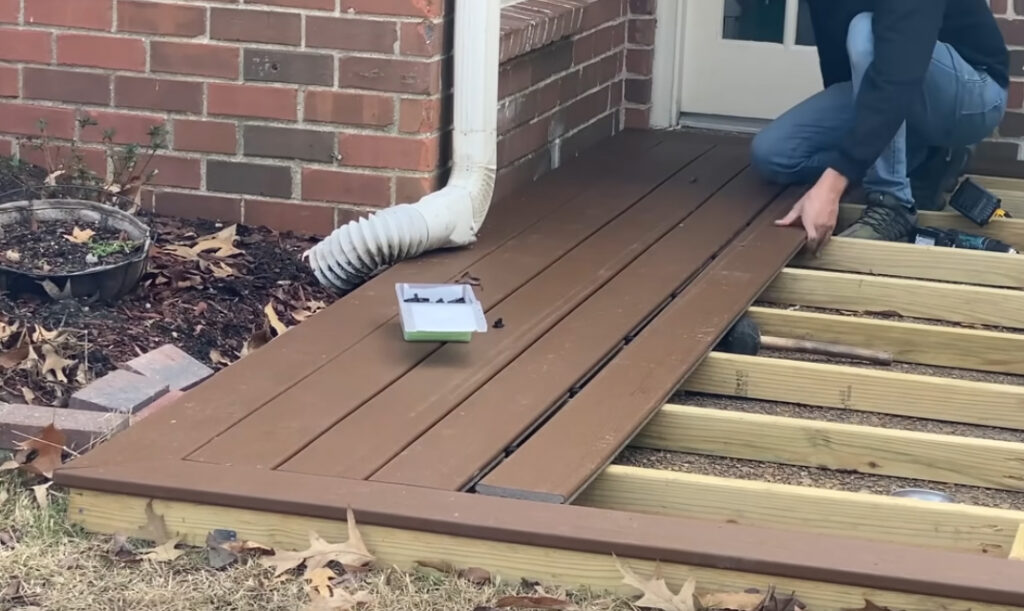Why I Switched to Composite Decking
The truth about decks and Northwest weather
Where I live, the rain doesn’t just fall — it soaks, sits, and slowly eats away at whatever it touches. Over the years, I’ve seen more decks rot from the inside out than I care to count. You can build a gorgeous cedar platform in May and watch it blacken by February. For a long time, I just thought that was part of the deal. You seal, you stain, you replace. Part of the rhythm of life outside, right?
But over time, I began to notice something: the homeowners who stopped calling me back to fix boards or refasten loose planks were the ones who’d gone composite. Fewer callbacks. Cleaner decks. No warped joists or splintered steps.
Composite decking explained in real terms
At its core, composite decking is a mixture of wood fibers and plastic. It might sound like synthetic flooring, but it doesn’t feel like that underfoot. Done well, it gives you the look of timber without the work. The fibers come from sawdust or reclaimed wood, and the plastic is often recycled too. These materials are blended and molded into boards that can last decades.
What matters most isn’t just the materials — it’s how they behave over time. You want something that holds up in rain, sun, and freeze-thaw cycles. In the field, I’ve learned to stop asking how something looks new and start asking how it’ll look in five years.
The best building advice I ever got: build not for the ribbon-cutting, but for the second winter.
Lessons learned the hard way with real wood
When I first started out, I built every deck from wood. Redwood, cedar, even pressure-treated pine when budgets were tight. Each had its pros and pitfalls. Cedar smelled amazing and worked like butter — until the mold got to it. Pine was cheap, but I lost count of how many screws pulled loose from warping.
One job really drove the point home. We built a full wraparound porch in mid-spring. Came out beautiful — fresh, square, and true. I returned nine months later to add a railing. The customer met me with a frown. Half the boards had cupped, nails were popping, and green fuzz coated the stairs. It was a humid year, sure, but no excuse. That’s when I started exploring alternatives.

Real weather resistance, not brochure promises
Composite decking doesn’t flinch when the seasons shift. The plastic shell (if you’re using capped boards) blocks water from seeping in, which means swelling and shrinking are minimal. That alone reduces about 80% of the wear I used to see on wooden decks.
Moisture doesn’t just ruin a deck — it slowly disconnects it from itself. Composite holds tight where wood gets weary.
I’ve worked on cabins where morning fog rolled in like clockwork. The wood would stay damp all day. But the composite sections? They’d bead water and dry fast. Less mildew. Less creep. Less worry.
Durability you can measure in years and stress saved
Is composite perfect? No. It scratches if you drag furniture. It can heat up under strong sun. But in terms of longevity, it’s the clear winner. I’ve replaced countless wooden decks in under a decade. I haven’t had to rip out a single composite one yet.
On one job up near the coast, a storm knocked a tree onto a second-story deck. Half the rail was crushed, but the boards were intact — just scratched. That same deck had survived four seasons of salt air and sideways rain. Still solid.
You pay more upfront, sure. But you stop paying later — in money, time, and frustration.
Maintenance that respects your time
Wood is needy. It wants oil, sanding, attention. Composite just wants a broom and a hose. Maybe a gentle cleaner if something spills. That’s it.
I’ve taught clients to set a seasonal reminder: sweep it in spring, rinse it in fall. Compared to wood’s yearly sanding and sealing ritual, that’s a dream. I once had a customer clean his composite deck with vinegar and baking soda. Worked like a charm. His dog even licked the railing — safe as can be.
The comfort of barefoot simplicity
One thing that’s rarely talked about: composite doesn’t splinter. If you’ve got kids, pets, or like walking barefoot with coffee in the morning — that’s a game changer. I’ve stepped on too many sneaky wood splinters while carrying lumber. Composite stays smooth.
On hot days, yes, some brands get warm. But textured finishes help. And if you pick lighter colors, it’s manageable. I usually test samples barefoot before committing on a job.
Choosing the right composite product
Not all composite is equal. Some boards are hollow — they’re lighter and cheaper but can sound echoey. Solid boards feel sturdier and resist bending better. Some have a plastic cap, which helps seal in the wood fiber and repel stains. Others are full-thickness composite.
Here’s what I look for:
- A good warranty — 15 years or more
- High recycled content (not just marketing fluff)
- Texture that gives grip, not just gloss
- UV protection — especially if it faces west
I always suggest clients hold samples in their hands, leave them outside, hose them down, and stomp on them. A little field testing beats any product sheet.
What I’ve come to believe
Composite decking isn’t just convenient. It’s a shift in mindset. Less fuss, more time to actually use your outdoor space. I’ve built decks for grilling, for stargazing, for quiet conversations with tea. When the surface stays solid year after year, those moments don’t get interrupted by a trip to the hardware store.
A good deck doesn’t just hold weight — it holds space for living.
For me, building with composite means fewer repairs, fewer regrets, and more time doing what matters. Not bad for some sawdust and recycled milk jugs.
Sources:
Rick’s Custom Fencing & Decking















